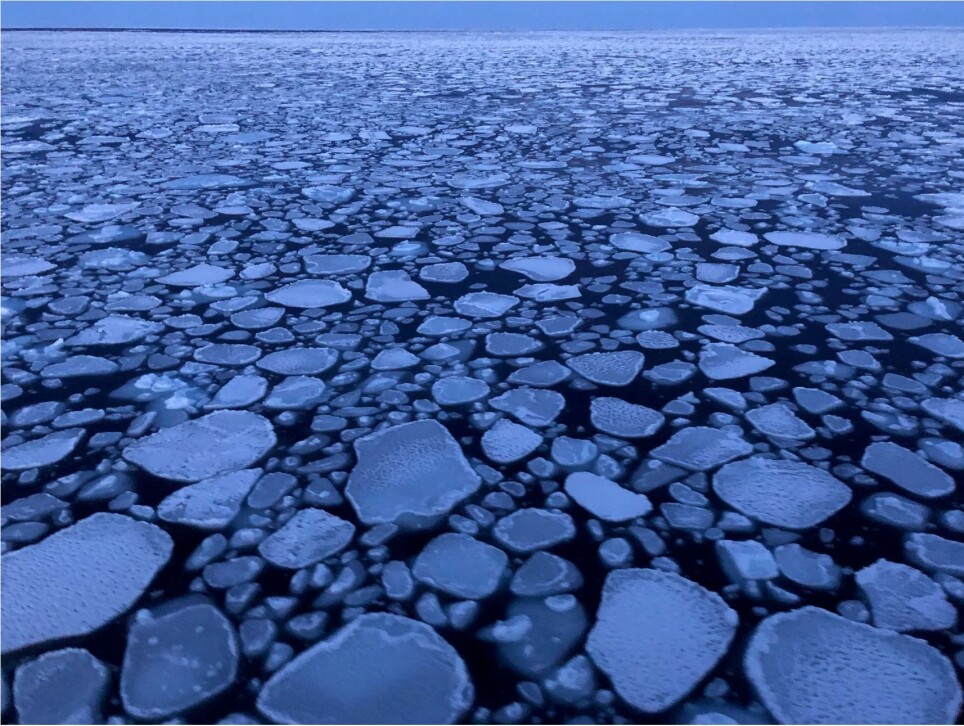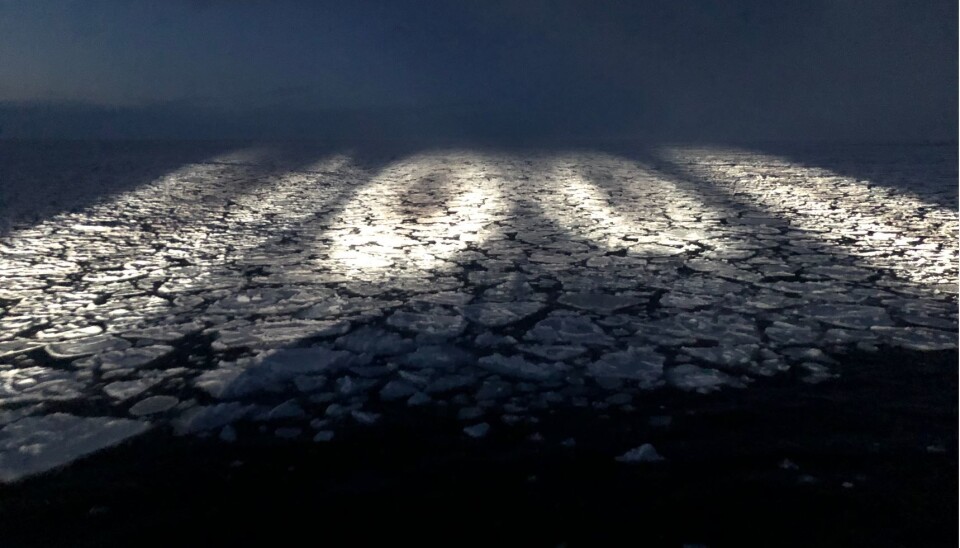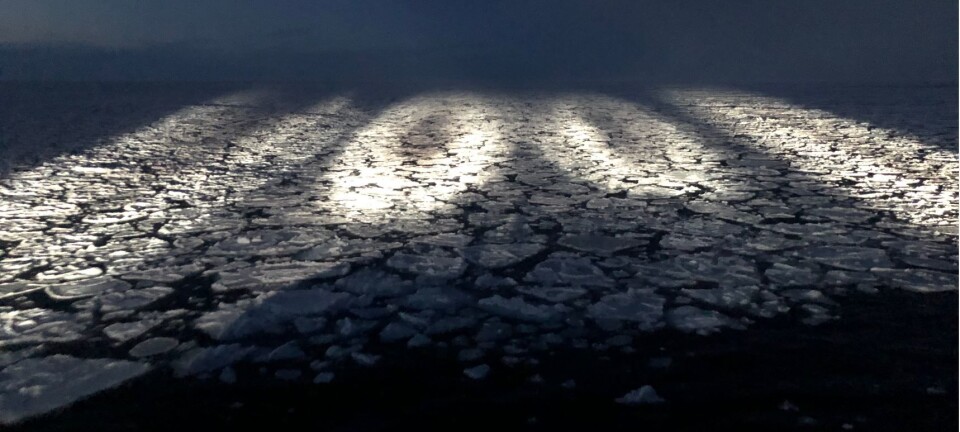
Pancakes in the waves - a field report from the wintery Barents Sea
February 13, 2021, southeast of Edgeøya
We left Longyearbyen on Tuesday evening 12th of February and have sailed south and east in search of ice. After four days, R/V Kronprins Haakon has reached 35 degrees east. Pancake ice is the first stage in ice forming and a clear sign that there have been waves in swing. We will measure these waves with a small instrument that stands on a stake in front of the bow. We have tried already, but after two days in open sea, it was covered with so much ice from sea spray that we almost did not get the instrument back on deck.
Now the wave instrument is cleaned and dried, and ready to compete again. In addition, we have ice in sight! When we now sail into the pancakes, we have the storm surge in our backs.
(Video: Øyvind Breivik)

When we get all the way into the ice, we will leave some wave instruments on the ice. These will measure for several weeks, and if we are lucky we will learn more about how the ice is moved by the waves. Jean Rabault at the Meteorological Institute and the University of Oslo has built a unique ice wave meter. Now it comes in a new and smaller version, thanks to collaboration with Malte Müller, also at the Meteorological Institute.
But even more important than how the ice moves the waves is how the waves affect the ice. Can waves cause ice to melt faster by breaking it up? Or maybe it's so that the ice melts later as the waves keep stuffing the ice more together?
The Nansen Legacy winter cruise does much more than measure waves. Tore Mo-Bjørklund from NTNU will soon run an automatic underwater vessel (AUV). Before that job is done he does not sleep much. "Boring is good" is supposedly a regular expression in the AUV community. If it is not a boring day, it means that something has gone wrong. Then we quickly talk loss of money on the seabed and lost data.
Turbulence measurements with a free fall meter (MSS) are also nerve-wracking cases - the instrument should go as far down as possible, but not further, because then it goes to the bottom! Ilker Fer from the Department of Geophysics at UiB sits with his heart in his throat every time the instrument goes over the railing. It has gone well so far…
Now we go in to pancakes with swell below while darkness descends behind us. If we are lucky, we get good measurements during the night. Maybe we will get another little piece in a big climate puzzle in place. "Everything is better with ice" according to cruise leader Frank Nilsen from UNIS. Even waves.









